Great Dane
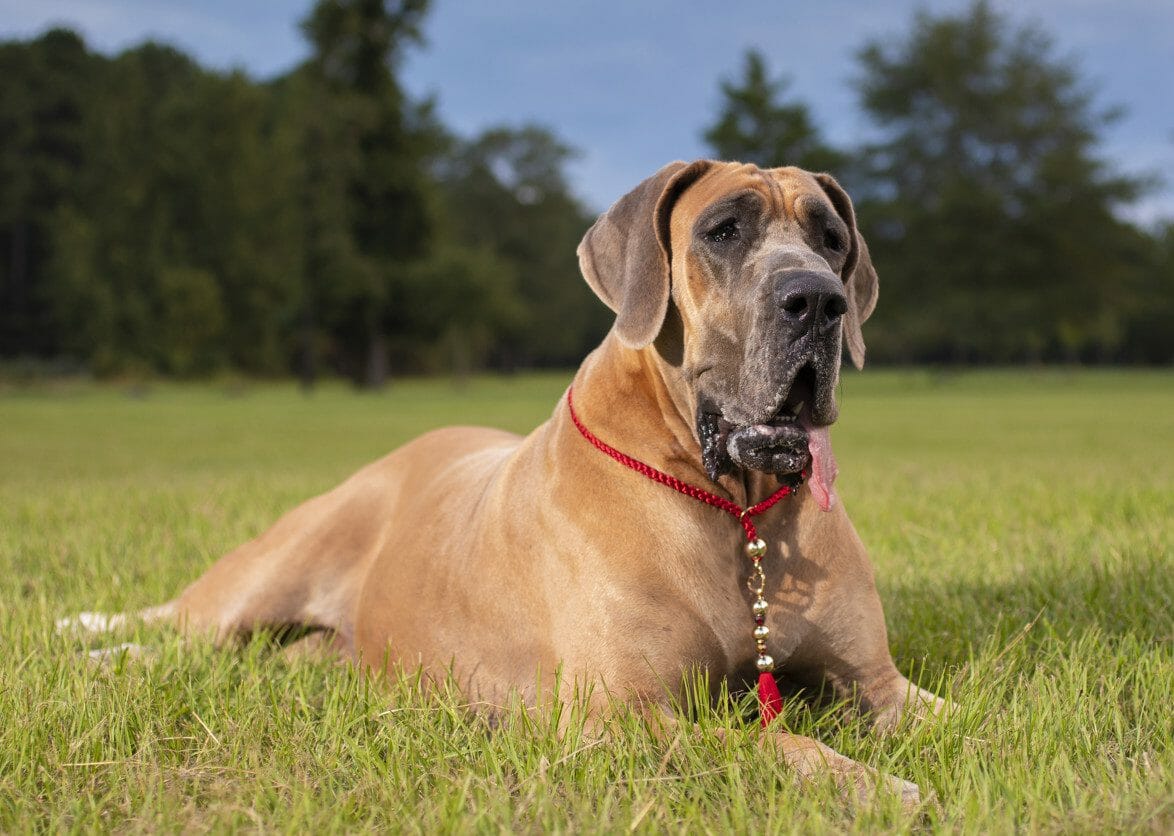
Great Dane Personality
Although a behemoth in size, the Great Dane is one of the most loving and gentle breeds in spirit. These canines are often likened to a child. They have a big heart and are often content simply receiving affection from its owners.
In spite of its gigantic size, the Great Dane’s mild temperament and unassuming, sweet nature allow it to be patient with others. After undergoing adequate socialization training, it tends to do well with children and other pets (if raised together).
However, if danger is sensed, their natural instincts kick in. The dog becomes alert and willing to defend those it loves at all costs. These canines perform well as guardians in the home. Always eager to please its family, Great Danes can be a fun, dependable companion to any family.
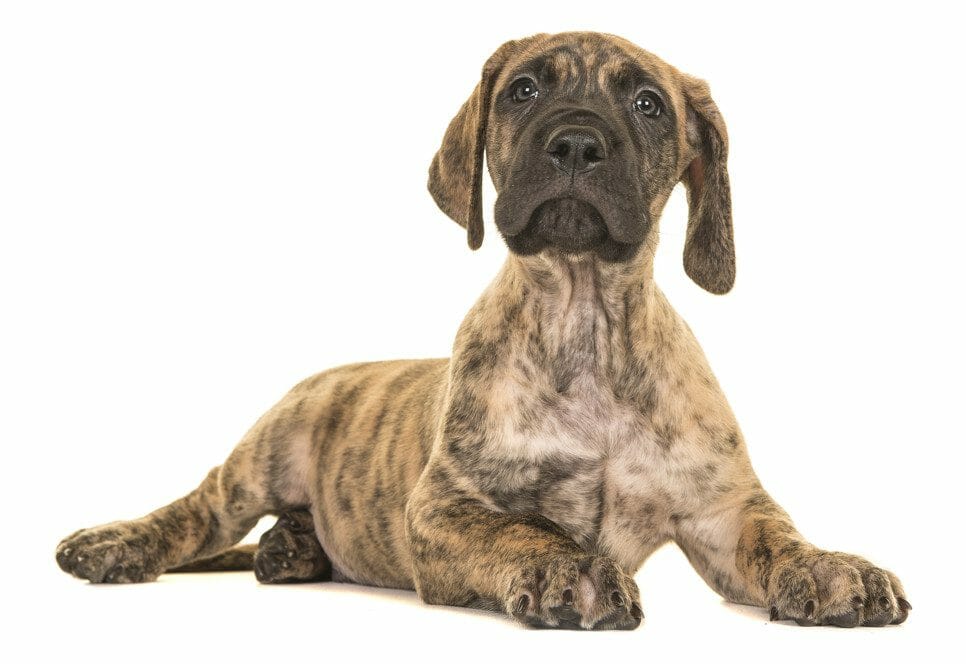
Living with a Giant
Although Great Danes are sweet, the mere size of their body is a potential issue that should be given attention. Small children should be carefully supervised and never left alone with these canines. This is not because a Great Dane will harm the child, but they may unintentionally knock the child over. Even a swift swing of the tail is enough to do the trick. The same goes for decorations in the house. These gentle giants may bump into and break all sorts of things.
Indoor Living Only
Surprisingly, Great Danes tend to do better if living indoors only. Although outdoor exercise is needed, these gentle giants thrive in the hustle and bustle of family life. Their calm, laid-back personalities enable them to be ideal house or apartment pets.
Known to be quick learners, housetraining usually comes with ease. If forced to live outdoors, many owners find they become bored and, subsequently, very destructive in order to keep themselves occupied.
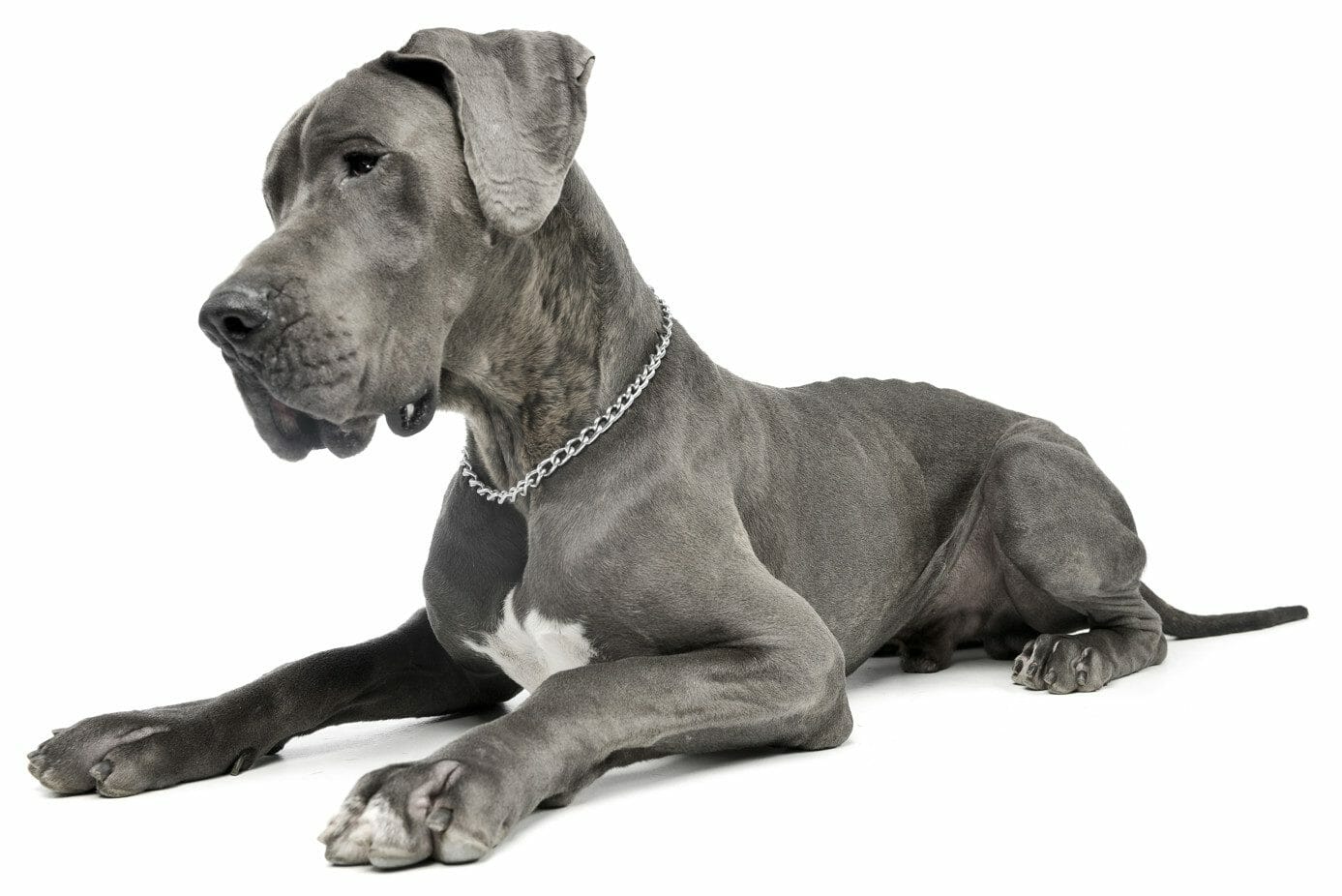
Great Dane Physical Features
The body of the Great Dane is tall, slender, and quite narrow. They are long-limbed with an equally long, skinny tail. These canines walk with an elongated and easy-going stride.
Great Danes have a narrow, rectangular-shaped head with a muzzle, jaw, and large nose that are angular and full. Its eyes are set widely on the face and carry a gentle expression. Although its ears are naturally floppy, many have cropped ears that are massive, pointy, and bat-like.
The neck and chest of a Great Dane is tightly wrapped in lean muscles. Overall, these canines emanate elegance, strength, and power through their appearance.
Coat Type and Color
The Great Dane’s smooth coat is generally very short yet dense. Shedding only occurs heavily in the spring or autumn months of the year. The accepted colors and pattern variations that may occur are as follows:
- Brindle
- Black and white (also known as a Harlequin Great Dane)
- Fawn or brown
- Blue (gray)
- Black
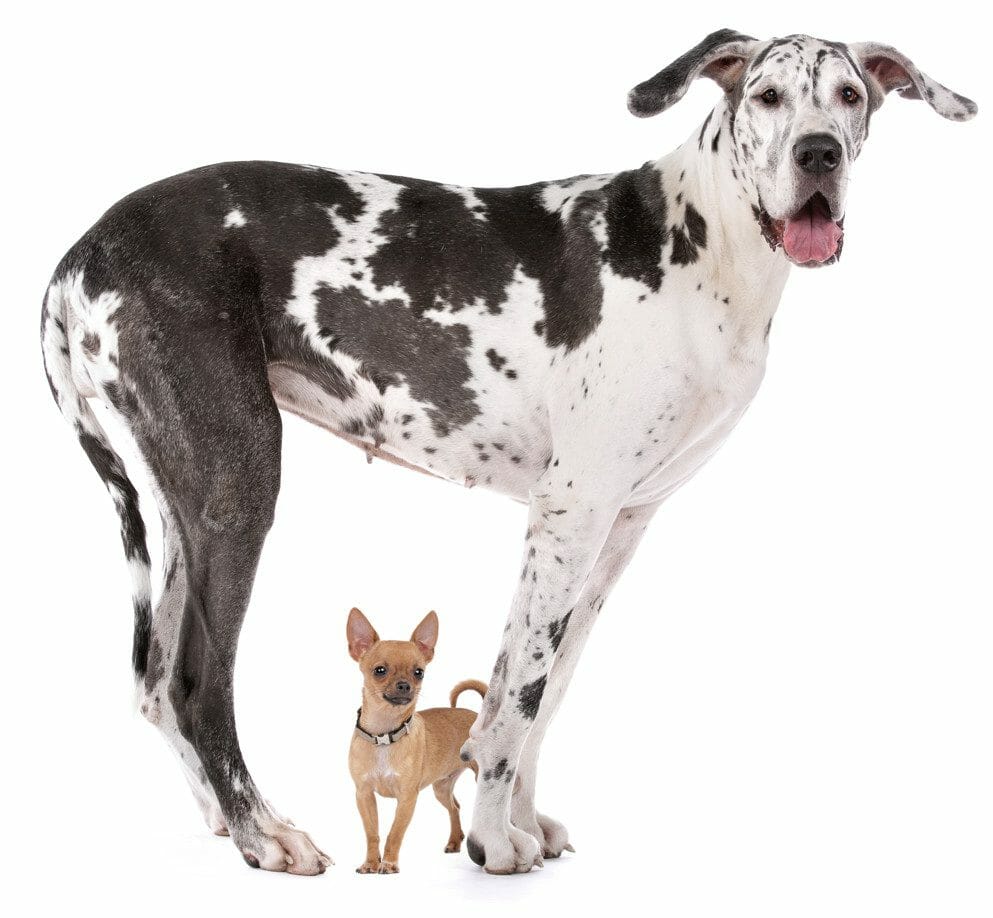
Body Dimensions
- Weight: Great Danes can weigh anywhere between 100 and 170 pounds, with males being on the high end of the spectrum.
- Height: On average, the males may get to be as tall as 32 inches at the withers. The females, on the other hand, fluctuate between 28 and 30 inches tall.
History of the Great Dane
Contrary to popular belief, the Great Dane has its roots deep within Germany. Some claim those canines have been around for more than 400 years, although it is debatable. What is certain, however, is that these giant animals were developed to hunt wild boars and other large animals. In order to craft such canines, breeders most likely used a mix of Mastiffs, Greyhounds, and Irish Wolfhounds.
Making Changes
As time passed, the Great Dane’s temperament was slightly altered to tone down the hostile and aggressive tendencies that it once needed as a hunter. These canine were then used primarily as a pet or protector of families across the country. By 1876, Germany had bestowed the “Deutsche Dog” with the title of National Dog of Germany.
Those “gentle giants” soon became highly sought after throughout the world, including the United States. In the 1870s, the breed was accepted by the American Kennel Club. Currently, the Great Dane ranks in 17th place among the most popular breeds.
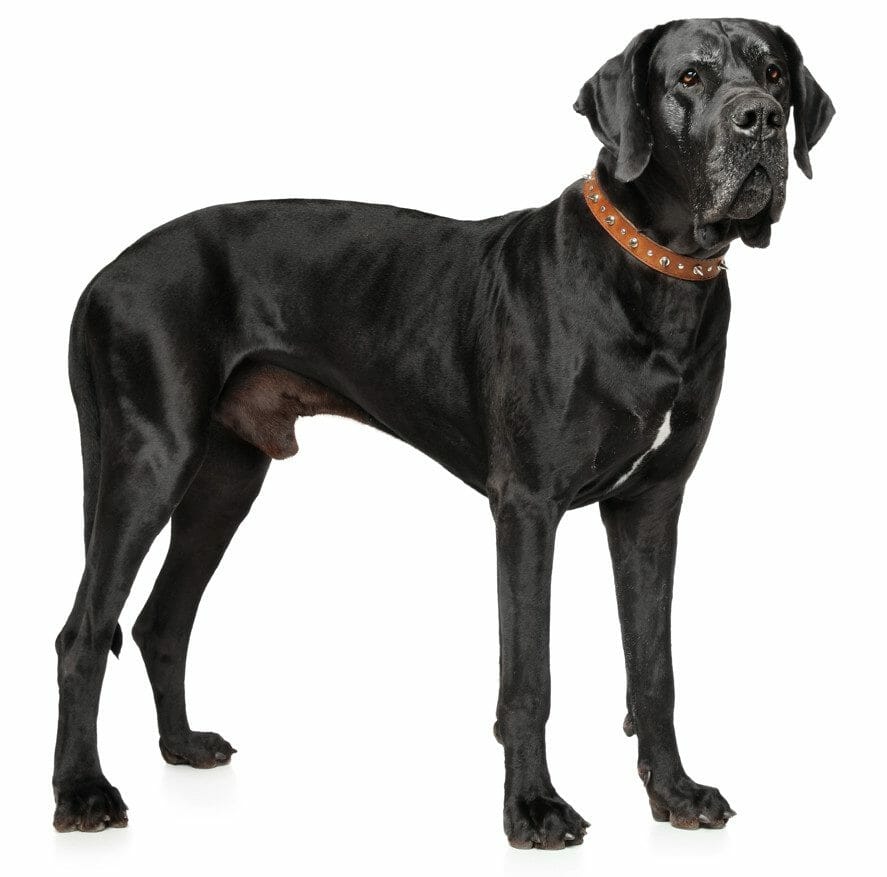
Facts about Great Danes
- This breed is portrayed famously in cartoons such as Marmaduke and Scooby-Doo. Famous cartoons such as these have helped seal the ongoing legacy of these giants.
- Because of its name, people mistakenly associate this breed with Denmark. However, no one has been able to uncover such a connection.
- According to Guinness World Records, a Great Dane by the name of Zeus is recorded as the tallest dog in the world—measuring 44 inches tall.
Proper Care of the Great Dane
Grooming
Besides daily brushing during shedding seasons, a brushing every week is sufficient for off-seasons. Baths may be given whenever needed. A Great Dane’s nails should be kept short and tidy. Cutting the nails every few weeks is usually enough.
Daily Exercise
Although Great Danes do not require intense exercise, a brisk walk each day is advised. This breed enjoys many sports and games, which can provide great bonding opportunities.
Training Needs
Training should begin the moment a puppy is brought home and continuously implemented throughout the dog’s life. Backyards should be secured with a tall, sturdy fence because Great Dane puppies are prone to digging holes or escaping through tiny crevices. Early, consistent training in obedience and socialization will yield a well-behaved, obedient pup.
Health Problems
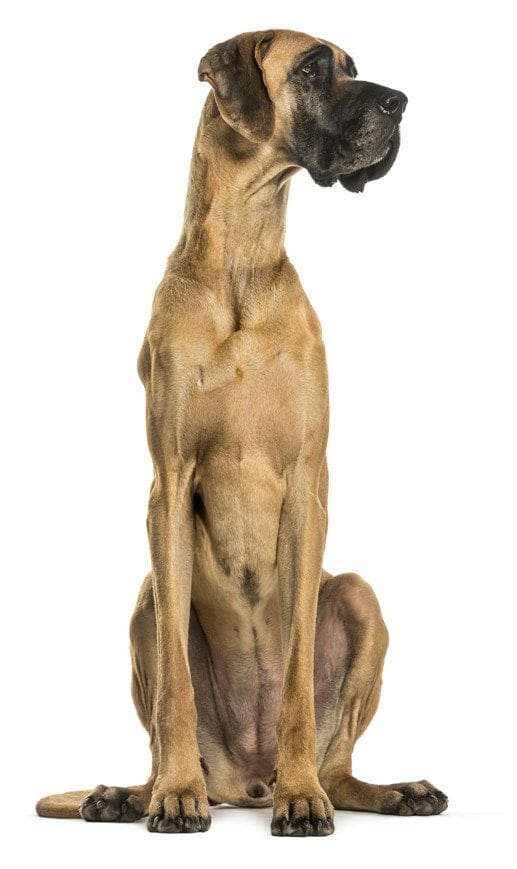 Unfortunately, due to its huge size and genetics, the Great Dane has a shorter lifespan than may other dog breeds, with many only living between 6 and 10 years. In spite of this, efforts to keep it healthy and happy for as long as possible are especially crucial.
Unfortunately, due to its huge size and genetics, the Great Dane has a shorter lifespan than may other dog breeds, with many only living between 6 and 10 years. In spite of this, efforts to keep it healthy and happy for as long as possible are especially crucial.
The AKC recommends that early evaluations of a Great Dane’s heart, hips, eyes, and endocrine system be completed during puppyhood. This can help rule out any problems that may already be developing. As with all dogs, Great Danes should find a vet for regular check-ups, receive all core vaccines, and receive preventive medications for heartworm, fleas, and ticks.
Listed are common medical conditions among Great Danes:
- Bloat (very common)
- Thyroid disorders
- Hip dysplasia
- Dilated cardiomyopathy (DCM)
- Wobbler syndrome
It is extremely important to take special care of how much and how fast Great Danes eat. Bloat—a potentially life-threatening situation—may result from eating too much too fast. Therefore, it is recommended that Great Dane owners talk with a vet to establish a healthy eating schedule in advance.

